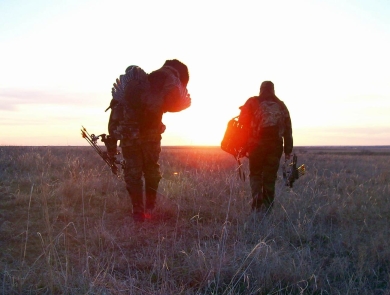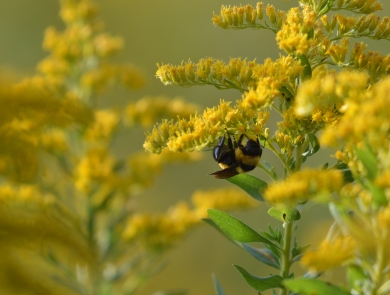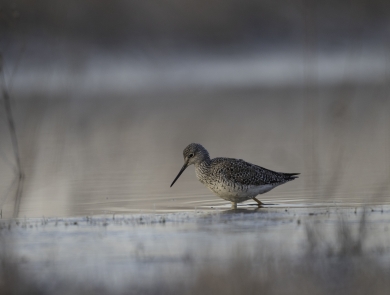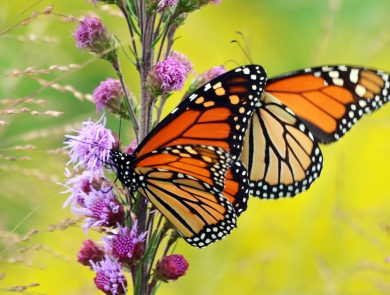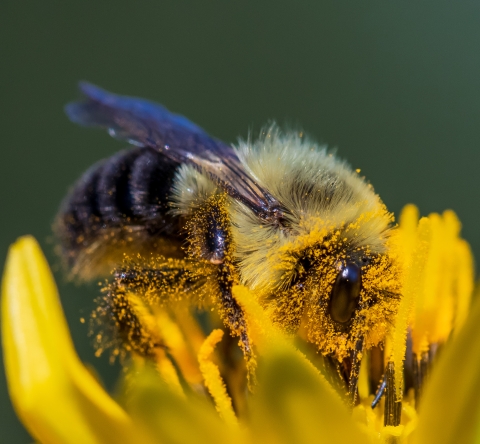Projects and Research
We manage the Service's public grasslands to promote grassland conservation and to contribute to the overall conservation effort, and we make use of non-regulatory and incentive-based tools to focus on grassland birds, pollinators, and aquatic species. In an effort to bridge gaps between the Service and our Indigenous and Tribal partners, we work alongside the Service’s Native American Liaisons to facilitate collaborative efforts across the biome, incorporating a combination of Traditional Ecological Knowledge (TEK) and conservation practices.
In Nebraska, the Service has partnered with the Rainwater Basin Joint Venture and the National Wetlands Inventory to increase the accuracy of data used to identify woody encroachment in wetlands and wet-meadows, which will help inform efforts to remove woody cover.
In the Service’s Southwest Region, the Partners for Fish and Wildlife (PFW) program has used $2.6 million dollars annually for the last 20 years to assist private landowners and Tribes, resulting in more than 1,000 projects involving grassland habitat improvement conservation practices applied on approximately 750,000 acres. The Oaks and Prairies Joint Venture Grassland Restoration Incentive Program (GRIP) has also allocated over $2 million in incentives since 2013 to over 100 projects for over 109,000 acres. The PFW program works alongside landowners to implement on-the-ground restoration and conservation measures on privately-owned land.
The North Dakota Ecological Services Office is collaborating with the North Dakota Natural Resources Trust to help leverage the Grassland Restoration Incentives Program, a program funded by oil and gas offsets. The program pays for increased diversity in seed mix and provides incentives for landowners to remain in the program. In the first project, incentives were provided to a landowner to enter into a perpetual grassland easement to be administered by the Service, providing multiple conservation benefits through the restoration of 300 acres of cropland to native grassland.
Our Species
Grassland Pollinators
Grasslands are often overlooked when it comes to pollinators, but grasslands support thousands of pollinator species, including bees, beetles, wasps, flies, moths, butterflies, and hummingbirds. In the United States, wild pollinators provide services estimated at four to six billion dollars annually.
In particular, grassland pollinators are dependent on the diversity of wildflowers for food and vegetation cover for shelter. The widespread loss of native grasslands also means a significant loss of these critical resources for pollinators. The worldwide decline of pollinators has garnered recent international attention as a result of habitat fragmentation, pesticide use, the spread of pathogens, parasites and predators, all of which is exacerbated by the changes to local and global climate patterns. Pollinators are in dire need of grassland restoration and conservation efforts to reverse the habitat loss and help these species recover.
Grassland Birds
Over the last 40 years, North American grassland bird populations have declined faster than any other group of birds. Over 75% of grassland bird species have shown significant population declines, and 53% of their population has been lost - more than 720 million birds. Habitat loss and the use of agricultural pesticides are contributing to the decline of grassland birds and pollinators.
The JV8 Central Grasslands Initiative represents over 72 federal, state, provincial, non-profit, and industry conservation partners from the U.S., Canada, and Mexico — all collaborating to stem grassland losses and the negative impacts to migratory birds. The JV8 is implementing grassland conservation programs across a landscape of 500 million acres and across multiple nations with the goal of reversing or stabilizing the decline of bird populations in the central grasslands of North America.




